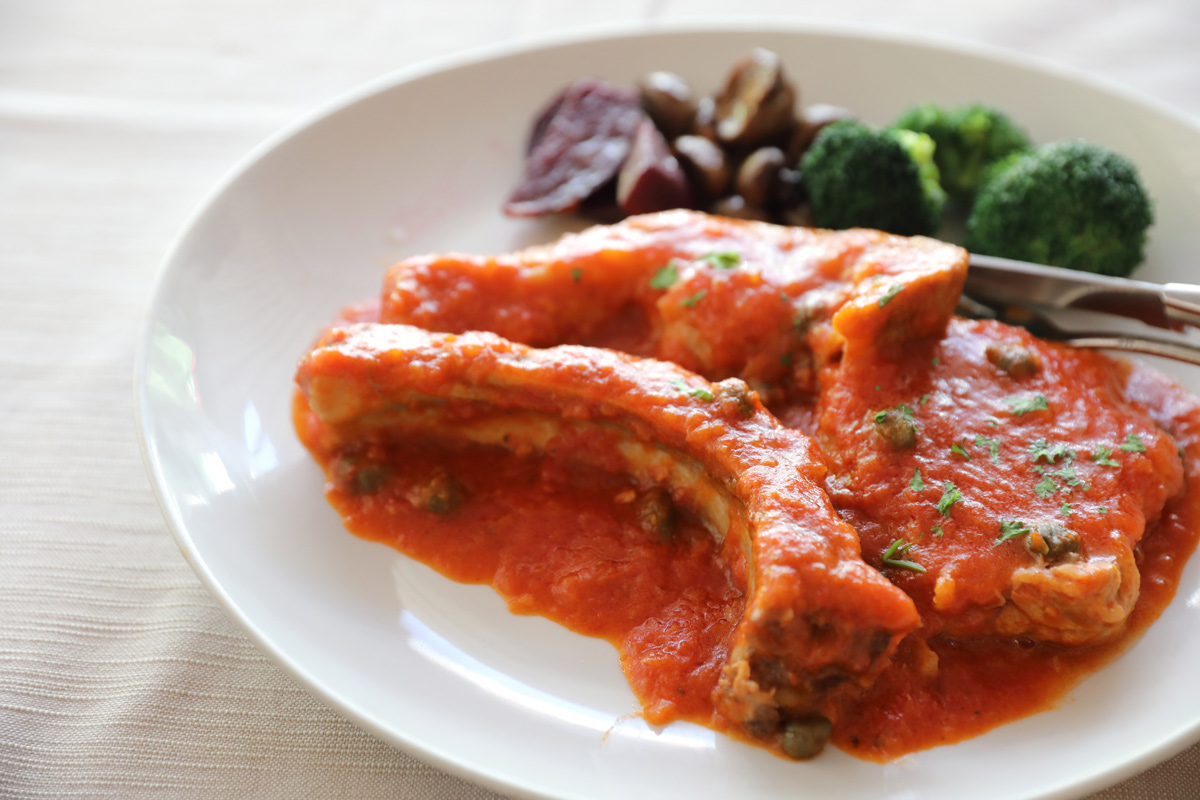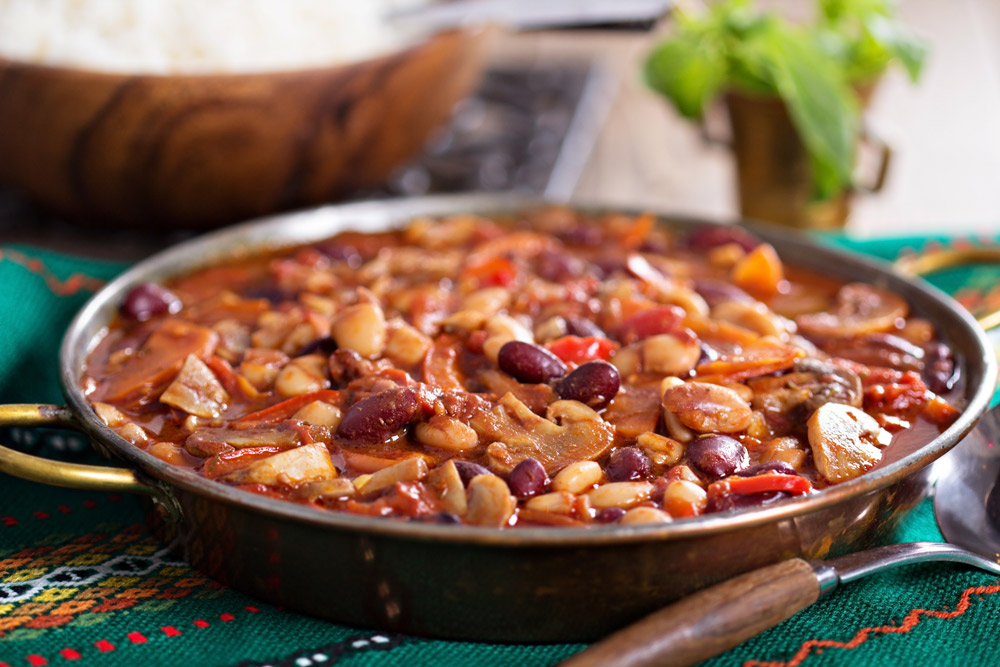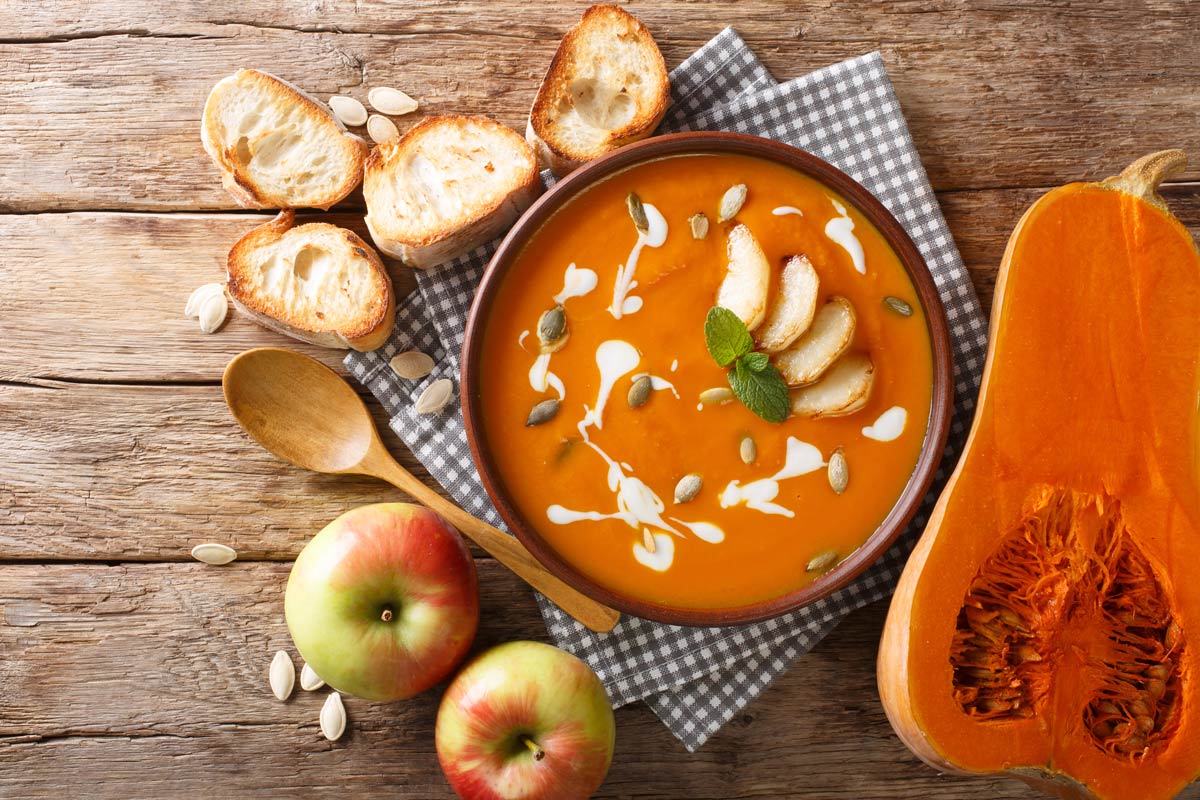Chocolate Chiffon Layer Cake Recipe, Spotlight on Cocoa Powder, How to Maximize Chocolate Flavor, Benefits of Jarlsberg Cheese, and 8 Steps for Better Heart Health
I love a romantic dinner at home for Valentine’s Day, and my chocolate cake is the perfect dessert indulgence. Knowing there are healthful compounds, like polyphenols, in its natural cocoa should cancel out any guilt! Read on for tips to get the most flavor in all your chocolate creations. And since February is also heart health month, I’m sharing the American Heart Association’s eight strategies to keep your ticker in tip-top shape.
Chocolate Chiffon Layer Cake
 Chocolate Chiffon Layer Cake
Chocolate Chiffon Layer CakeWedges of these light-and-luscious layers are great on their own or with a dollop of thick Icelandic skyr or Middle Eastern labneh, a cultured dairy product rich in probiotics. To elevate them to layer-cake status for a festive occasion, chocolate whipped cream is all you need.
Ingredients
For the chocolate cake:
- 5 large eggs
- 1 cup cake flour
- 1/2 cup cocoa
- 1 1/2 teaspoons baking powder
- 1/2 teaspoon baking soda
- 1/2 teaspoon kosher salt
- 1 cup sugar, divided
- 1/2 cup extra virgin olive oil
- 1/2 cup brewed coffee at room temperature
- 1 1/2 teaspoons vanilla extract
- 1/2 teaspoon cream of tartar
For the chocolate whipped cream:
- 1/3 cup cocoa, plus more for dusting
- 1/2 cup confectioners’ sugar
- 1 teaspoon instant espresso
- 3 cups heavy cream
- 1 teaspoon vanilla
Directions
Step 1
Separate the whites from the yolks when the eggs are cold and let them come to room temperature (the whites will whip much better). Place one of the racks in the middle of your oven and preheat to 325°F. Line two 9-inch cake pans with parchment paper, but don’t grease them; set aside.
Step 2
In a very large bowl, sift together the flour, cocoa, baking powder, baking soda, and salt. In another bowl, whisk the yolks and 1/2 cup sugar until fully blended and light in color, about 2 minutes, and then whisk in the olive oil, coffee, and vanilla. Whisk the egg mixture into the flour mixture until this batter is completely blended.
Step 3
In the bowl of a stand mixer or another large bowl, beat the egg whites and cream of tartar on low speed for about 30 seconds, and then gradually add the remaining 1/2 cup sugar as you slowly increase the speed to high. Continue beating until you get a glossy meringue with firm peaks, about 8 to 10 minutes.
Step 4
Fold about a cup of meringue into the batter to lighten it and then gently fold in the rest in three batches, just until there are barely any streaks of meringue visible. Divide the batter between the two pans and gently smooth the surfaces with an offset spatula. Bake the cakes on the same rack for 15 minutes and then reverse their positions. Continue baking until the tops spring back when lightly pressed with a fingertip and a tester comes out clean, about 10–15 minutes more, depending on your oven.
Step 5
Invert the pans onto two wire racks to cool for about an hour. Turn them right side up and run an offset spatula around the sides of the cakes to loosen them. Invert again, take off the pans, peel off the parchment, and let cool completely.
Step 6
To make the chocolate whipped cream, whisk the cocoa, confectioners’ sugar, and espresso powder together in a small bowl. Whip the heavy cream and vanilla at medium speed until thickened, add the cocoa mixture, turn up the speed to high, and whip until stiff. Use a large spatula to spread about 1/3 of the chocolate cream on one of the cake layers. Top with the other layer and spread the rest of the cream on the top and sides. Dust with additional cocoa. Store covered in the fridge.
Yields 8–10 servings

Healthy Ingredient Spotlight
Cocoa Powder
Unsweetened cocoa powder is a food lover’s dream—intense chocolate taste and few calories. The cocoa process starts with roasted cocoa bean particles, or nibs. The nibs are turned into chocolate liquor. To make cocoa, the chocolate liquor is pressed to remove much of the cocoa butter and then ground into powder. This liquor is where most of chocolate’s flavor comes from and explains why white chocolate, made of cocoa butter and sugar, is rather bland.
From a health perspective, cocoa beans have more than 200 compounds, including anti-oxidant polyphenols, the best known of which are flavanols. Flavanols are thought to improve blood flow to the brain and heart, help lower blood pressure, and fight cell damage, according to Harvard Health. Ounce for ounce, natural cocoa is the food with the highest flavanol content.
You might have noticed that cocoa is available in two main forms: natural, with a deeper taste yet lighter color; and Dutch-process, with a milder taste and darker color. When “dutching,” an alkaline ingredient is used to counter cocoa’s natural acidity. While it’s often possible to use the two interchangeably with only slight differences in taste in the finished dish, Dutch-processed cocoa retains fewer of its healthful compounds. According to a 2022 report on cocoa in the International Journal of Molecular Sciences, dutching can reduce the polyphenols by 60 or more percent.
To account for the acidity of natural cocoa, baking soda—with or without baking powder—is typically called for as a leavening agent in baked goods. If you don’t see it listed in the ingredients in a recipe, add 1/8 teaspoon of baking soda for every 3 tablespoons of natural cocoa powder. And always sift cocoa into the recipe’s other dry ingredients to avoid lumps.

Quick Kitchen Nugget
Maximizing Chocolate Flavor
It might sound crazy, but a pinch each of salt and coffee powder help bring out the sweetness of chocolate without being discernible themselves. Simply whisk them into the other dry ingredients in a recipe or, in the case of chocolate sauce or hot cocoa, as you’re warming the mixture on your cooktop.

For Your Best Health
Say (Jarlsberg) Cheese!
A recent study on the potential benefits of eating Jarlsberg, a cheese from Norway, to stave off bone thinning showed that some types of cheese could be better for you than others. It builds on previous research suggesting that Jarlsberg may help boost levels of osteocalcin, a hormone associated with strong bones and teeth.
The participants were 66 young and healthy women. One group added a daily 57g portion of Jarlsberg (about 2 ounces) to their diet for 6 weeks; the other added 50g of Camembert and then switched to Jarlsberg for another six weeks.
While Jarlsberg and Camembert have similar fat and protein profiles, only Jarlsberg is rich in vitamin K2, which occurs thanks to bacteria in certain fermented foods. According to a summary of the results, “Blood sample analysis showed that the key biochemical markers of bone turnover, including osteocalcin, and vitamin K2 increased significantly after 6 weeks in the Jarlsberg group, but not the Camembert group.”
This finding (along with positive changes in blood sugar and cholesterol of Jarlsberg-eating participants) suggests that it might help prevent the bone-thinning of osteopenia, which precedes osteoporosis, as well as metabolic diseases, such as diabetes.
The study, published in BMJ Nutrition, Prevention & Health, shows that “while calcium and vitamin D are known to be extremely important for bone health, there are other key factors at play, such as vitamin K2, which is perhaps not as well known,” commented Professor Sumantra Ray, executive director, NNEdPro Global Centre for Nutrition and Health, and co-founder of the publication, adding, “Different methods of preparation mean there are key differences in the nutrient composition of cheese which has often been regarded as a homogenous food item in dietary research to date. This needs to be addressed in future studies…As this is a small study in young and healthy people designed to explore novel pathways linking diet and bone health, the results need to be interpreted with great caution as the study participants will not necessarily be representative of other groups.” More research is needed to confirm these findings.

Fitness Flash
Steps for Better Heart Health
The American Heart Association recently introduced its Life’s Essential 8, a checklist of health markers and lifestyle habits that support the idea that it’s easier to prevent heart problems than try to correct them. An important part of the AHA message is that you’re never too old to take these steps:
- Follow the DASH Diet or, even better, the Mediterranean Diet, focusing on extra virgin olive oil, vegetables, fruits, fish, low-fat dairy, whole grains, and occasionally lean meat.
- Exercise for at least 150 minutes of moderate-intensity or 75 minutes of vigorous-intensity exercise every week.
- Avoid all types of nicotine exposure, including e-cigarettes/vaping.
- Get 7–9 hours of sleep every night.
- Know your body mass index to help assess whether you’re at risk for health problems from excess weight.
- Know your non-HDL cholesterol number—total cholesterol minus your good HDL number, a better and simpler way to assess blood fats with no fasting needed before the blood test.
- Know your A1C number, a better check of glycemic control than a single blood glucose reading.
- Know your blood pressure numbers—120/80 mm Hg is still optimal. Hypertension begins when either systolic pressure is between 130 and 139 mm Hg or diastolic pressure is between 80 and 89 mm Hg.



